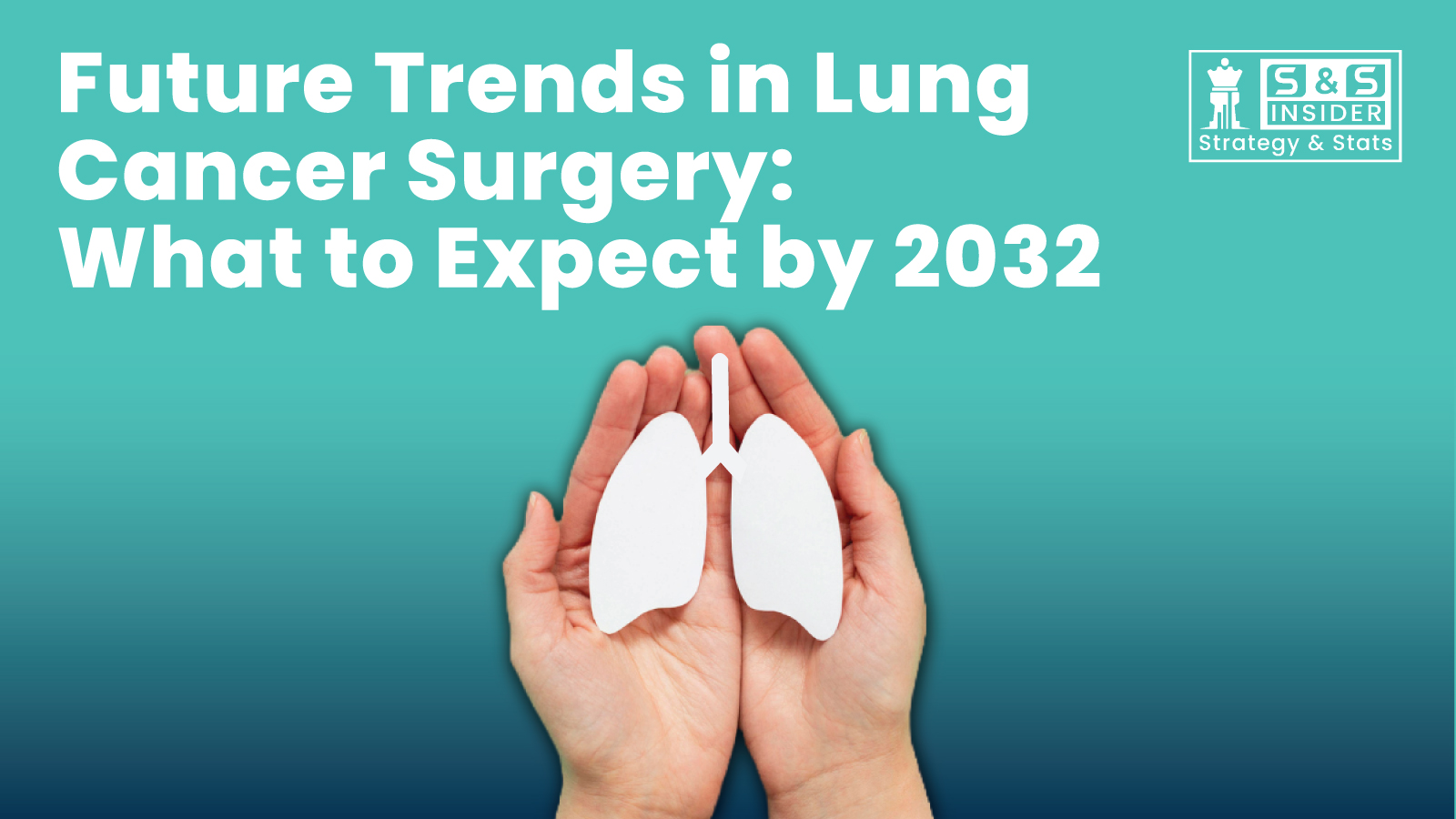
Discover lung cancer surgery market forecast, driven by a projected market growth from $5.4B in 2023 to $7.9B in 2032, enhanced by AI and 3D imaging advancements.
Lung cancer remains one of the most prevalent and deadliest forms of cancer globally. In 2020, it accounted for nearly 1.8 million deaths, according to the World Health Organization (WHO). As early detection technologies and treatment approaches evolve, the field of lung cancer surgery is undergoing significant transformations. By 2032, lung cancer surgery is expected to be shaped by advancements in minimally invasive techniques, robotics, and personalized treatments. Further here, we’ll explore the key future trends in lung cancer surgery and how they will redefine patient outcomes.
The lung cancer surgery market is projected to experience steady growth, with a market size valued at USD 5.4 billion in 2023, expected to reach USD 7.9 billion by 2032, growing at a compound annual growth rate (CAGR) of 4.3%. This expansion is driven by factors such as the increasing incidence of lung cancer, lack of cure, continuous innovations in medical technology, and greater access to healthcare services globally. As the number of diagnosed lung cancer cases rises, both traditional and minimally invasive surgical options are expected to see higher demand.
One of the most notable shifts in lung cancer surgery is the increasing preference for minimally invasive procedures, particularly Video-Assisted Thoracic Surgery (VATS) and robotic-assisted surgery. These techniques reduce the size of incisions, minimize post-operative complications, and shorten recovery times for patients.
VATS, a procedure that allows surgeons to access the lungs through small incisions with the help of a camera, has become a popular alternative to traditional open surgeries like lobectomy or pneumonectomy. As these techniques continue to evolve, they are expected to dominate the field, with an increasing number of patients benefiting from reduced trauma and faster recovery.
Robotic surgery is another breakthrough that is gaining traction. For instance, Temple University Hospital introduced the Ion endoluminal system, a robotic technology that allows surgeons to reach lung nodules more precisely for biopsy. Robotic systems offer enhanced precision, better visualization, and more flexibility for surgeons, resulting in fewer complications. As companies like Medtronic continue developing platforms like the Hugo RAS system, the integration of robotics into lung cancer surgery will become more widespread by 2032.
In this regard, one of the most significant factors in helping to cure patients suffering from lung cancer is early diagnosis. With the development of medical imaging technology, it has now been designed for early detection and diagnosis to enable more effective surgical processes. When lung cancer is diagnosed at an early stage, the probability of surviving it is much higher, and the surgical excision of contained neoplasms remains one of the most beneficial measures.
The introduction of the Azurion Lung Edition by Koninklijke Philips N.V. incorporates the power of 3D imaging and live X-ray, aiding in diagnosing and treating lung cancer more accurately. Such enabling technologies increase the precision of dissection through the intricate structures of the lung for the target disease, leading to quicker surgeries and less room for error.
Additionally, the focus of attention is increasingly turned towards the use of artificial intelligence (AI) technologies in the diagnosis of lung cancer. For instance, Sybil, a tool developed at MIT and the Mass General Cancer Center, has been shown to have an 86% to 94% accuracy in predicting the risk of lung cancer development. This persistent trend of enhancing precision in the early diagnosis of lung cancer will always encourage more patients to opt for surgical treatment thus allowing them to be cured from the disease.
Indeed, the other important development is the emergence of personalized medicine in lung cancer surgery. Understanding that lung cancer is more than just a solid tumor, the therapy will be progressively designed for each specific patient. A patient centered approach might include surgical intervention followed by targeted therapies or immunotherapy to improve outcomes.
For instance, advances in genomic sequencing may permit a surgeon to determine the genetic aberrations within a patient’s tumor and carry out more advanced surgery followed by appropriate treatment. Particular treatment policies may also help to reduce invasive procedures such as surgery, thereby speeding up the recovery process and reducing complications.
The lung cancer surgery landscape is also being shaped by strategic partnerships and collaborations among healthcare providers, tech companies, and research institutions. Companies are joining forces to develop new diagnostic tools and treatment methods, such as VOCxi Health's collaboration with Silicon & Software Systems Ltd. to create a device for lung cancer detection. These partnerships are accelerating technological advancements and expanding the range of available treatment options.
Companies are coming together to make new apparatus and new ways to cure, for instance VOCxi Health company in cooperation with Silicon & Software Systems Ltd are creating devise for lung cancer detection. These partnerships are focusing on and catalyzing research, creating new treatment modalities and increasing the number of available options.
In the next two decades, compared to the year 2024, the field of lung cancer surgery is likely to witness drastic improvements by 2032 due to the upsurge in developments in minimally invasive approaches, devices, robotics, early lung cancer detection, and targeted therapies. As the market expands under the pressure of growing incidences of lung cancer and technological advancements, patients are likely to have more accurate and less invasive surgeries, thus enhancing their survival and quality of life. From a speculative perspective, these developments herald a better lung cancer treatment and care system for patients. Connect with us for a detailed report!